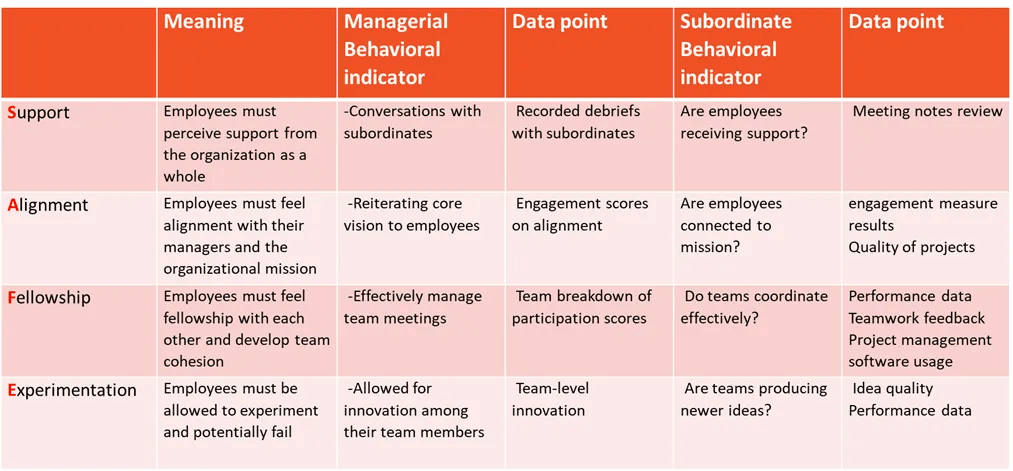ATD Blog
Closing the Loop: Using Data to Maintain Trust and Psychological Safety
Organizations are experiencing challenges around trust. Enter psychological safety.
Tue Sep 10 2024

In my previous posts I wrote about psychological safety and clarified what psychological safety meant for managers. We used an acronym called SAFE, which stands for:
Support: Employees must perceive support from the organization as a whole.
Alignment: Employees must feel alignment with their managers and the organizational mission.
Fellowship: Employees must feel fellowship with each other and develop team cohesion
Experimentation: Employees must be allowed to experiment and potentially fail.
The chart below shows data points and behavioral indicators that illustrate whether or not your organization is SAFE.

Today I’d like to focus on the concept of support specifically regarding trust. Organizations are experiencing challenges around trust with many employees losing trust in their employers. Jack Kelly recently shared that employees feel a lack of transparency with their employers. Without trust, psychological safety is difficult to achieve.
One missed opportunity that I see in much of my consulting work for leaders and organizations involves survey results. Many organizations implement survey interventions. They go through the process of collecting survey data, analyzing it, and presenting it back to senior leaders and in some cases to the staff at large. Frequently, senior leaders focus on benchmarking or comparing their organization to other organizations in terms of engagement or psychological safety or other relevant constructs. However, very rarely do organizations illustrate that changes have been made because of the results of those surveys. While survey feedback may not be seen as a major indicator of psychological safety and trust it is a way for organizations to show support for employees. Many times, when we’ve spoken to employees of client organizations, they complain that the organization has not taken action based on survey results.
From a psychological safety and trust perspective, this is a violation. The employee has provided feedback (albeit anonymous) and they expect senior leaders to take action based on what they’ve told the organization. Thus, the issue is less about benchmarking against other organizations and more about using feedback from employees to develop and build trust over time. This is often a slow process but the rewards of following this process are especially valuable. For organizational leaders, being explicit about the changes that have been made and tying those changes back to survey results is a way to clearly indicate that senior leaders trust employees and listen to their feedback. This creates an environment of psychological safety where employees feel safe and trust that their feedback is useful and utilized.
At the upcoming ATD OrgDev conference I’ll be presenting on how leaders can build psychological safety using data. I hope to see you at the upcoming conference. Register for it here: https://orgdev.td.org.
You've Reached ATD Member-only Content
Become an ATD member to continue
Already a member?Sign In

